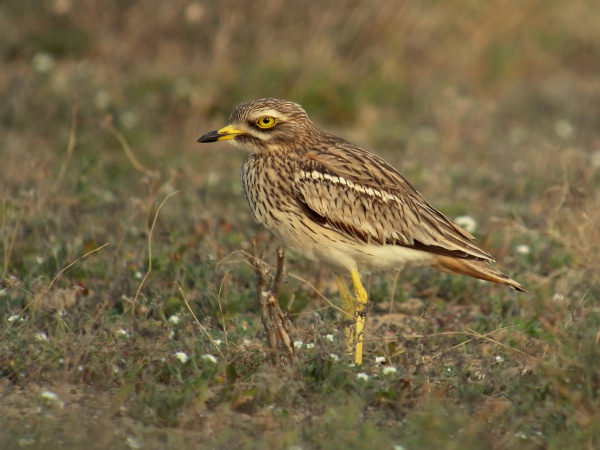Facts About Eurasian stone-curlew
The Eurasian stone-curlew, also known as the Eurasian thick-knee or simply stone-curlew, is an intriguing bird belonging to the Burhinidae family. Its scientific name, *Burhinus oedicnemus*, has fascinating origins: "Burhinus" is derived from Greek words meaning "ox" and "nose" while "oedicnemus" refers to its pronounced knee joints, hence the nickname "thick-knee."
The term "stone curlew" dates back to 1667 when Francis Willughby first used it, inspired by the bird's nocturnal calls and its preferred rocky habitats. In 1901, Edmund Selous referred to it as the "great or Norfolk plover" in his book *Bird Watching*.
This medium-sized wader is notable for its strong yellow and black beak, large yellow eyes, and camouflaged feathers. Despite being a wader, the Eurasian stone-curlew prefers dry, open areas with patches of bare ground. It is mostly nocturnal, hunting insects, small invertebrates, and occasionally small reptiles, frogs, and rodents. The bird typically lays 2-3 eggs in a simple scrape on the ground.
You can find the Eurasian stone-curlew across Europe, North Africa, and southwestern Asia. However, some populations are dwindling due to changes in agricultural practices. Although it is generally not considered at risk (classified as Least Concern), certain regions require focused conservation efforts.
There are five subspecies of the Eurasian stone-curlew: *distinctus*, *harterti*, *insularum*, *oedicnemus*, and *saharae*, each inhabiting different regions. Interestingly, the Indian stone-curlew was once classified as a subspecies of this bird.

 Romania
Romania